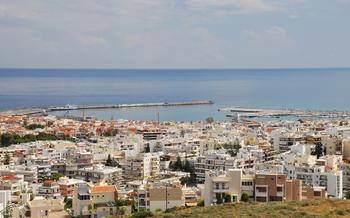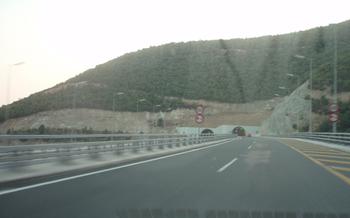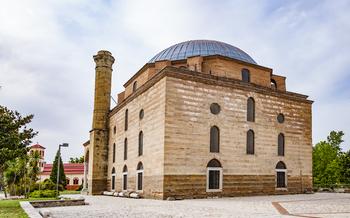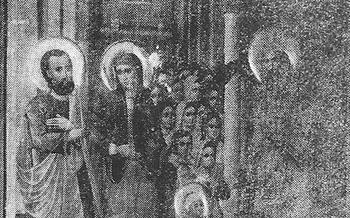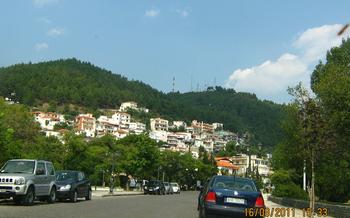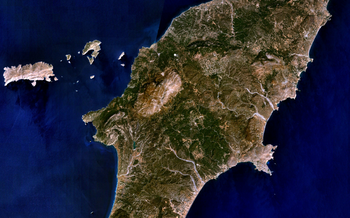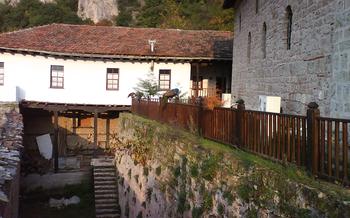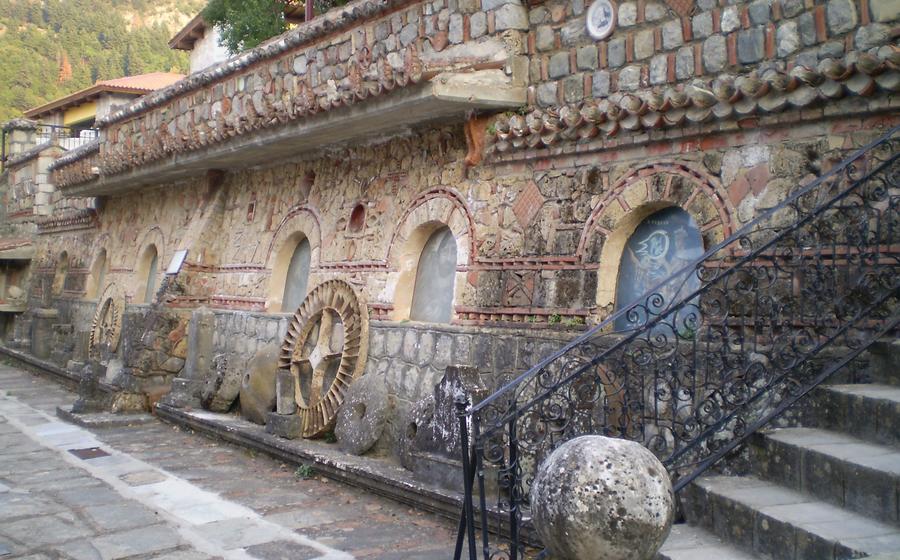
Monastery of Damasta
- Historical Significance
- Location and Accessibility
- Architectural Marvel
- Stunning Frescoes and Icons
- Religious Significance
- Monastic Life and Traditions
- Breathtaking Views
- Pilgrimage and Spirituality
- Local Cuisine and Hospitality
- Hiking and Nature Trails
- Photography Opportunities
- Accommodations and Amenities
- Festivals and Events
Historical Significance
The Monastery of Damasta, nestled in the heart of Lamia, Greece, holds immense historical and religious significance. Founded in the 16th century, it stands as a testament to the enduring faith and devotion of the Greek Orthodox Church. Initially established as a humble hermitage, the monastery gradually evolved into a spiritual center, attracting monks and pilgrims from across the region. Its strategic location at the crossroads of major trade routes further contributed to its prominence. As an enduring symbol of Byzantine and post-Byzantine influences, the monastery's architecture, frescoes, and icons reflect the rich artistic and cultural heritage of Greece. Throughout the centuries, it has played a pivotal role in preserving and transmitting the traditions of the Greek Orthodox Church, serving as a beacon of hope and resilience during the Ottoman period.
Location and Accessibility
The Monastery of Damasta is situated in the picturesque town of Lamia, Greece, nestled amidst the foothills of the Pindus Mountains. The exact location of the monastery is at the village of Damasta, approximately 20 kilometers southeast of Lamia city center. To reach the monastery, visitors can take the scenic route by car, enjoying the breathtaking views of the surrounding countryside. The drive from Athens, the capital of Greece, takes about three hours, while from Thessaloniki, the second-largest city in the country, it takes approximately four hours. Public transportation is also available, with regular buses departing from Lamia to Damasta village. Visitors can also opt for guided tours that often include transportation from major cities, providing a hassle-free and informative experience. The monastery's proximity to other notable attractions in the region, such as the ancient city of Thermopylae and the scenic seaside town of Kamena Vourla, makes it an ideal destination for combining history, nature, and spirituality in one unforgettable journey.
Architectural Marvel
The Monastery of Damasta stands as a testament to the architectural prowess of its builders, showcasing a harmonious blend of Byzantine and post-Byzantine influences. Its fortified walls, reminiscent of a bygone era, are a testament to the monastery's role as a defensive stronghold. The imposing towers and gates, strategically positioned, speak of the need for protection and seclusion in uncertain times.
Within the monastery's walls, a central courtyard serves as the heart of the complex, connecting various sections and providing a tranquil space for contemplation. Arched walkways, supported by elegant columns, create a sense of continuity and movement, leading visitors through different parts of the monastery. The domed roofs, a hallmark of Byzantine architecture, add majesty and grandeur to the overall structure.
The integration of traditional Greek elements with influences from the Ottoman period is evident in the monastery's architecture. Intricate carvings and decorative motifs adorn the walls, blending seamlessly with the more austere Byzantine style. This fusion of styles reflects the monastery's rich history, having endured different periods of rule and influence.
Stunning Frescoes and Icons
The Monastery of Damasta is renowned for its exquisite frescoes and icons that adorn the interior of the church and other buildings. These works of art are a testament to the skill and devotion of the artists who created them, blending Byzantine iconography with post-Byzantine influences. Visitors can marvel at the vibrant colors, intricate details, and expressive faces depicted in these religious masterpieces.
One of the most striking frescoes is the "Last Judgment," which covers an entire wall of the church. It depicts the separation of the righteous and the wicked, with Christ seated in glory at the center. The vivid portrayal of heavenly bliss and eternal punishment is a powerful reminder of the consequences of one's actions.
Another highlight is the icon of the Virgin Mary, known as the "Panagia of Damasta." This revered icon is believed to have miraculous powers and attracts many pilgrims who come to seek her intercession and blessings. The icon is adorned with precious jewels and elaborate gold work, reflecting the deep devotion of the faithful.
The monastery also houses a collection of smaller icons depicting various saints, scenes from the Bible, and historical events. These works provide a glimpse into the beliefs, traditions, and history of the Greek Orthodox Church.
Extensive restoration efforts have been undertaken to preserve these priceless works of art, ensuring that future generations can continue to appreciate their beauty and significance.
Religious Significance
The Monastery of Damasta holds immense religious significance within the Greek Orthodox Church. It serves as a place of worship, pilgrimage, and spiritual retreat for Orthodox Christians from all over Greece and beyond. The monastery is dedicated to the Dormition of the Theotokos, the Virgin Mary's falling asleep and assumption into heaven. Pilgrims flock to the monastery to venerate the holy relics associated with the Virgin Mary, believed to possess miraculous powers. The monastery also hosts several religious festivals and ceremonies throughout the year, including the feast day of the Dormition on August 15th, which attracts thousands of devout pilgrims. Visitors can witness the solemn processions, chanting of hymns, and fervent prayers that characterize these religious gatherings, gaining a deeper understanding of the spiritual essence of the monastery.
Monastic Life and Traditions
Within the walls of the Monastery of Damasta, a vibrant community of monks dedicates their lives to prayer, meditation, and communal living. Embracing the principles of monasticism, they take vows of poverty, chastity, and obedience, committing themselves to a life of simplicity and devotion. Visitors to the monastery are granted a glimpse into this unique way of life, observing the monks as they engage in their daily routines and rituals. The atmosphere is one of deep spirituality, where silence and contemplation reign supreme. The monks' unwavering dedication to their faith and their pursuit of a higher calling create an aura of serenity and introspection that touches the hearts of all who visit.
Breathtaking Views
The Monastery of Damasta offers visitors breathtaking views that will leave them in awe. Perched atop a hill, the monastery commands panoramic vistas of the surrounding mountains, valleys, and forests. On a clear day, visitors can see for miles in every direction, taking in the stunning natural beauty of the region. The monastery's elevated position also provides visitors with a unique perspective of the surrounding villages, with their whitewashed houses and red-tiled roofs nestled amidst lush greenery. As the sun sets, the sky transforms into a canvas of vibrant colors, casting a warm glow over the monastery and the surrounding landscape. Whether you're a nature lover, a photographer, or simply someone who appreciates stunning views, the Monastery of Damasta is a must-visit destination. Make sure to bring your camera to capture the unforgettable moments you'll experience here.
Pilgrimage and Spirituality
The Monastery of Damasta holds a profound spiritual significance for Orthodox Christians, attracting pilgrims from near and far who seek solace, renewal, and a deeper connection with their faith. Pilgrimage to the monastery is a centuries-old tradition, with believers embarking on a journey to this sacred site to pay homage to the holy relics and receive blessings from the monks.
Upon arrival at the monastery, pilgrims typically light candles and offer prayers in the serene atmosphere of the church. They venerate the relics of saints and martyrs, believed to possess miraculous powers and intercede with God on behalf of the faithful.
The monastery also serves as a place of spiritual retreat, where visitors can find respite from the worldly distractions and immerse themselves in contemplation and prayer. The tranquil surroundings, the chanting of monks, and the beauty of the icons create an environment conducive to deep spiritual reflection and connection with the divine.
Local Cuisine and Hospitality
The Monastery of Damasta is located in a region renowned for its delicious cuisine and warm hospitality. Visitors can indulge in traditional Greek dishes prepared with fresh, local ingredients, such as grilled meats, seasonal vegetables, and homemade pastries. The local cuisine reflects the region's rich culinary heritage, with dishes often featuring herbs and spices grown in the surrounding mountains.
In the nearby villages, visitors can find tavernas and restaurants serving authentic Greek fare. Whether it's a simple meal of grilled octopus and Greek salad or a feast of slow-cooked lamb with roasted potatoes, there is something to satisfy every palate. The local wines, produced from grapes grown in the region's vineyards, are also worth sampling.
The people of the region are known for their warm hospitality and welcoming spirit. They are always happy to share their culture and traditions with visitors, making them feel like part of the community. Visitors may be invited to join in on local celebrations, such as village festivals or religious holidays, where they can experience the true essence of Greek culture.
Hiking and Nature Trails
The Monastery of Damasta is nestled amidst breathtaking natural scenery, offering visitors the opportunity to explore a network of hiking and nature trails that wind through the surrounding countryside. These trails cater to hikers of all fitness levels and interests, providing a chance to immerse themselves in the beauty of the Greek wilderness.
The most popular trail begins from the monastery gates, taking hikers on a scenic route through lush forests, past babbling streams, and up to a panoramic viewpoint that offers stunning vistas of the surrounding mountains and valleys. Along the way, hikers can spot local flora and fauna, including wildflowers, olive groves, and various bird species, making this trail ideal for nature enthusiasts and birdwatchers.
For those seeking a more challenging hike, the trail continues beyond the viewpoint, leading to higher elevations with even more breathtaking views. This section of the trail is recommended for experienced hikers with proper gear and supplies.
Whether you're a seasoned hiker or simply looking for a leisurely stroll, the hiking trails around the Monastery of Damasta provide a perfect opportunity to connect with nature, enjoy the fresh air, and create lasting memories in this serene and picturesque setting.
Photography Opportunities
The Monastery of Damasta is a photographer's paradise, offering a wealth of picturesque landscapes, architectural details, and religious iconography that make for stunning photographs. The monastery's unique location atop a hill provides panoramic views of the surrounding mountains, valleys, and forests, creating a breathtaking backdrop for your shots.
The monastery's architecture is a blend of Byzantine and post-Byzantine styles, featuring fortified walls, towers, arched walkways, and domed roofs. These elements, combined with the monastery's lush surroundings, create a visually captivating scene that will delight any photographer.
The interior of the monastery is equally photogenic, with its exquisite frescoes and icons adorning the walls and ceilings. The vibrant colors and intricate details of these artworks make for striking photographs that capture the spiritual essence of the monastery.
The lighting conditions at the Monastery of Damasta are particularly favorable for photography. The soft, golden light of sunrise and sunset casts a warm glow on the monastery's buildings and surroundings, creating a magical atmosphere that is perfect for capturing stunning photographs.
To make the most of your photography experience at the Monastery of Damasta, be sure to bring a camera with a wide-angle lens to capture the expansive views and a macro lens for close-up shots of the frescoes and icons. A tripod is also recommended for stability, especially when shooting in low-light conditions.
Whether you are a professional photographer or simply an enthusiast, the Monastery of Damasta offers endless opportunities to capture beautiful and memorable images that will transport you back to this sacred place long after your visit.
Accommodations and Amenities
Visitors to the Monastery of Damasta have a range of accommodation options to choose from, ensuring a comfortable and convenient stay. Numerous hotels, guesthouses, and traditional Greek village houses are located nearby, offering a variety of choices to suit different preferences and budgets. These accommodations provide essential amenities such as comfortable rooms, private bathrooms, and Wi-Fi access, allowing visitors to relax and unwind after a day of exploration.
For those seeking a more immersive experience, staying in a traditional Greek village house is an excellent option. These charming houses, often made of stone or wood, offer a unique glimpse into the local culture and way of life. Visitors can enjoy the authenticity of village life, surrounded by friendly locals who are always willing to share their stories and traditions.
When choosing accommodation, it is advisable to book in advance, especially during the peak tourist season (June to August), to avoid disappointment and secure the best rates. Additionally, visitors should consider the proximity of their accommodation to the monastery, as well as the availability of parking and other desired amenities.
Festivals and Events
Throughout the year, the region surrounding the Monastery of Damasta comes alive with a variety of festivals and events that showcase the rich cultural heritage of Greece. Visitors have the opportunity to immerse themselves in the vibrant traditions and customs of the local community.
One of the most significant events is the annual religious festival held in honor of the monastery's patron saint. This celebration typically involves a grand procession, traditional music and dance performances, and a feast featuring local delicacies.
Other notable events include the olive harvest festival, where visitors can witness the traditional methods of olive picking and pressing, and the wine festival, which celebrates the region's renowned viticulture with tastings, music, and dancing.
For those seeking a more cultural experience, there are various art exhibitions, theater performances, and film screenings held throughout the year. These events provide a platform for local artists and performers to showcase their talents and share their unique perspectives on Greek culture.
By aligning your visit with one of these festivals or events, you can truly immerse yourself in the heart of Greek traditions and create lasting memories of your time at the Monastery of Damasta.
